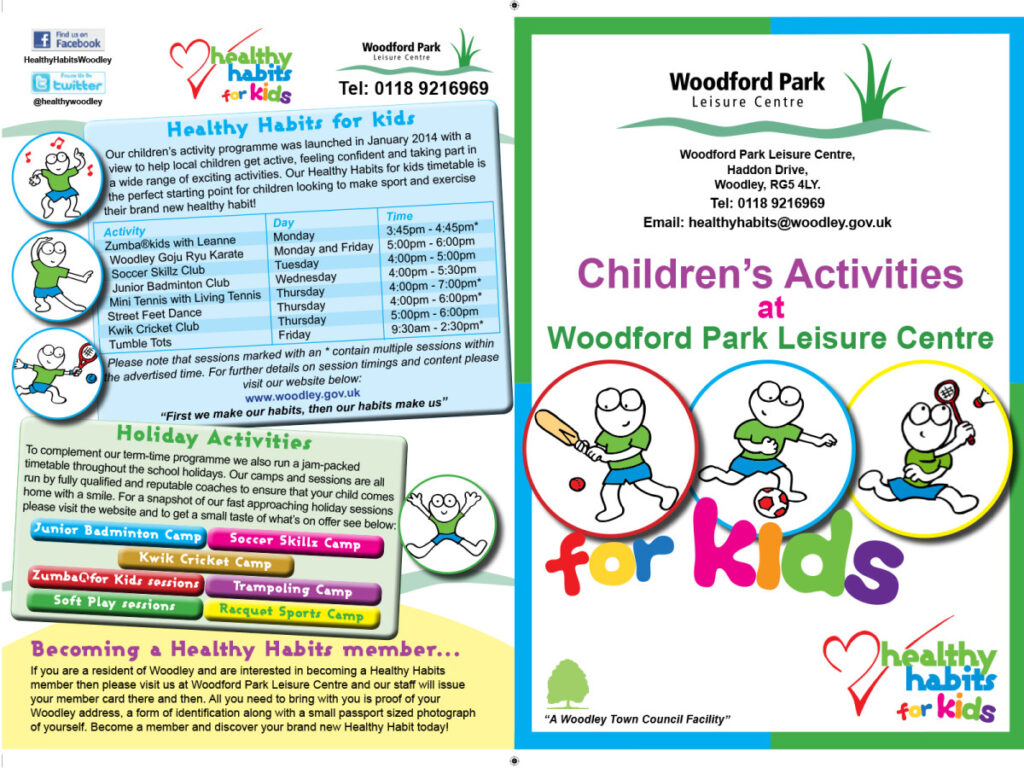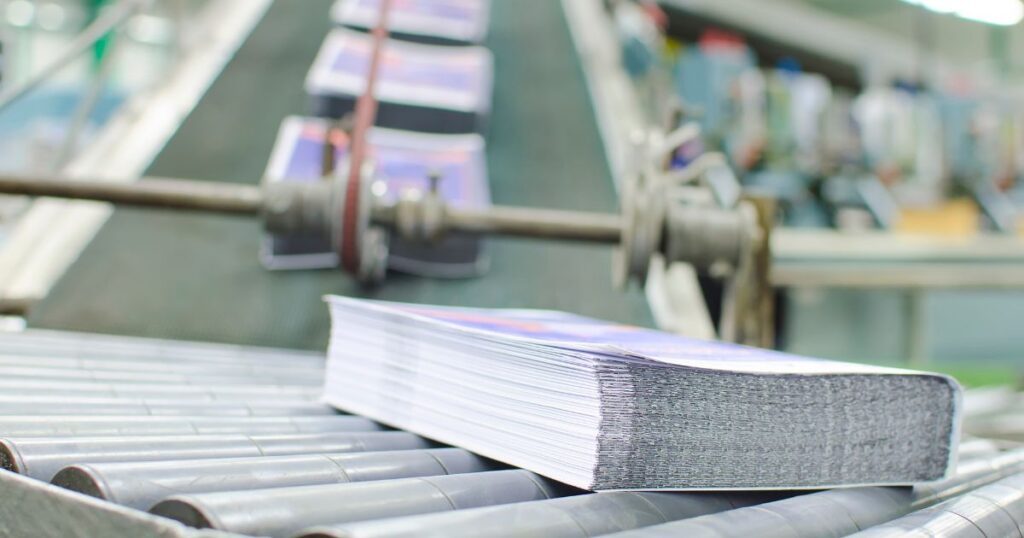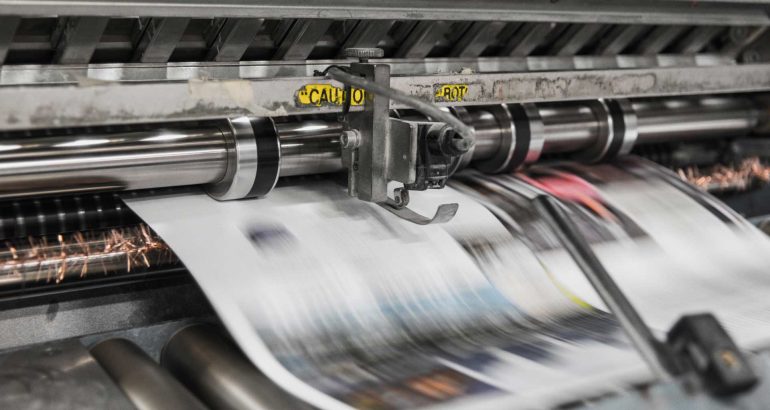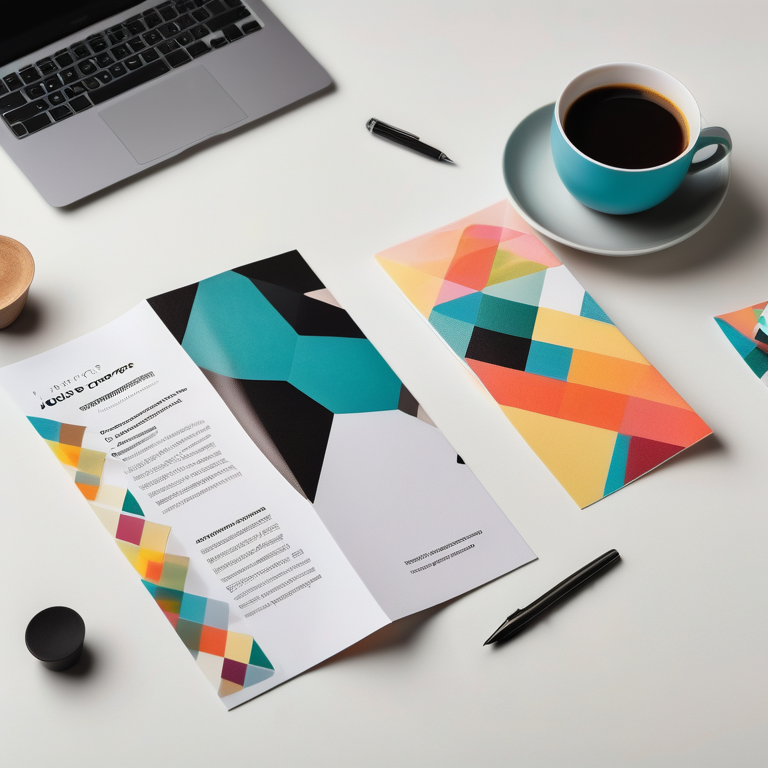What are Flyers?
From endless social media feeds to banner ads that chase you across the internet, sometimes the most effective form of communication is also the most tangible.
Often overlooked, a simple flyer is an incredibly underrated marketing tool for many businesses across the UK.
But, what is a flyer?
In this guide, we cover:
- What is a flyer?
- 7 benefits of flyers to businesses
- 6 main types of flyers
- Professional flyer design
- FAQs
Let’s jump in.
So, What Exactly Is a Flyer?
A flyer is a form of paper advertisement intended for wide distribution and typically posted or distributed in a public place, through the post, or handed out to individuals.
Unlike a brochure, which often folds and contains more detailed information, a flyer is generally simpler, more direct, and aims for immediate impact.
A flyer can be an invitation to an event, a mini-menu for a takeaway, a discount voucher, a quick public service announcement, or even a brief informational handout.
Here are some key characteristics of flyers:
- Size and Format – Flyers are usually single, unfolded sheets of paper, though they can vary in size. Common sizes include A4, A5, and DL (one-third of A4).
- Content – They typically contain concise information about an event, product, service, or idea. They often include headlines, bullet points, contact information, and sometimes images or graphics.
The primary goal of a flyer is to grab attention, convey a key message swiftly, and prompt a specific action. This could be visiting a shop, calling a number, scanning a QR code, or simply becoming aware of a brand or offering.

At Image Box Design, we offer professional flyer design and printing for businesses across the UK. If you’re looking to have a flyer designed, please contact us for a free quote!
7 Benefits of Flyers to Businesses
So, why would a business still invest in flyers? Here are some of the reasons:
1. Cost-Effective Marketing
Compared to many other forms of advertising, flyers are incredibly economical to produce, especially in larger quantities. This makes them an accessible marketing tool for businesses of all sizes, from startups to established enterprises. You can reach a broad audience without breaking the bank.
2. Targeted Local Reach
Flyers are perfect for reaching specific geographical areas. Handing them out in a particular neighbourhood, placing them in local businesses, or distributing them at community events ensures your message gets directly to the people most likely to be interested in your local offerings.
This hyper-local targeting is often more effective than broad digital campaigns for certain businesses.
3. Tangibility and Memorability
A physical flyer stands out. People can hold it, touch it, put it in their pocket, or stick it on their fridge. This tangibility makes your message more memorable and creates a stronger connection than a banner ad that disappears with a click.

4. Direct Call to Action (CTA)
Flyers are superb at driving immediate action. Whether it’s an exclusive discount code, a limited-time offer, a phone number to call, or a QR code linking directly to a landing page, the design of a flyer naturally lends itself to clear and concise calls to action.
5. Brand Awareness and Legitimacy
A professionally designed flyer instantly boosts your brand’s credibility. It shows you’ve invested in your marketing and take your business seriously. Consistent branding across your flyers reinforces your identity and helps build recognition within your target market.
6. Versatile Distribution Channels
The ways you can distribute flyers are almost endless. Door-to-door drops, in-store handouts, event giveaways, placement on community notice boards, direct mail – the flexibility allows you to get your message directly into the hands of your potential customers.
7. Measurable Results (with a little thought)
While not as automatically trackable as digital ads, you can still measure the effectiveness of your flyer campaigns. Use unique discount codes, specific landing page URLs, or ask customers where they heard about your offer. This allows you to refine future campaigns for even better results.
6 Main Types of Flyers
While the basic definition of a flyer remains the same, its application and design can vary significantly depending on its purpose:
- Promotional Flyers – These are perhaps the most common type, designed to announce sales, special offers, new product launches, or grand openings. They often feature bold graphics, compelling headlines, and clear calls to action to drive immediate interest and sales.
- Event Flyers – From concerts and festivals to workshops and charity drives, event flyers are crucial for getting the word out. They typically include event details, dates, times, locations, and sometimes ticket information or registration instructions. The design often reflects the theme or mood of the event.
- Informational Flyers – These are less about direct sales and more about educating an audience. This could include public service announcements, health and safety guidelines, political campaign messages, or detailed information about a service or product. While still concise, they may contain slightly more text than a purely promotional flyer.
- Voucher/Coupon Flyers – Specifically designed to offer discounts or special deals, these often feature perforated sections that can be torn off and redeemed. They are a fantastic way to entice new customers or reward existing ones.
- Mini-Menus/Service Lists – For food businesses, a flyer can double as a concise takeaway menu. For service-based businesses, it might list key offerings and pricing. These are highly practical and provide immediate utility to the recipient.
- Real Estate Flyers – Often found in property windows or at open houses, these showcase property details, photos, and contact information for real estate agents. Their purpose is to generate interest in a specific listing.

Professional Flyer Design From Image Box Design
Looking for a graphic design company to design your flyer?
A cluttered, poorly laid out, or unappealing flyer will end up in the bin, and this is where professional graphic design comes in.
At Image Box Design, we create flyers that:
- Has a clear, concise message: Less is often more.
- Uses compelling visuals: High-quality images and engaging graphics grab attention.
- Employs readable typography: The fonts chosen should be clear and legible.
- Features a strong call to action: What do you want the reader to do next? Make it obvious.
- Reflects your brand identity: Consistent colours, logos, and overall style reinforce your brand.
Our team work with you to design and print flyers that not only look fantastic but also deliver tangible results, driving engagement and growth for your business.
Ready to start your project? Contact Image Box Design today!
FAQs about Flyers
What is a flyer?
A flyer is a direct and tangible way to communicate a message to a broad audience, often with a local or immediate focus.
How many words should be on a flyer?
Generally, less is better. When considering the purpose of a flyer, remember that it’s designed for quick impact and to capture initial interest. Generally, less is always better. A good flyer aims to convey a clear message with minimal text, letting visual elements do much of the heavy lifting. You should strive for a bold headline that immediately grabs attention, followed by key details presented concisely, often using bullet points.
The goal is to provide important information without overwhelming the reader. Think of it as providing the necessary information to prompt the next step, whether that’s visiting a website or attending an event. While there’s no fixed word count, the most important elements should be scannable within a few seconds, making it a great way to communicate quickly to a wide audience.
What’s the typical size of a flyer?
Flyers are typically a single sheet of paper, though sometimes a folded leaflet might be used for more extensive information. When creating promotional materials, it’s crucial to consider the correct dimensions. Common sizes include A5 (148 x 210 mm), A6 (105 x 148 mm), and DL (99 x 210 mm). However, a custom flyer can be designed to suit specific needs, such as for posting on bulletin boards or for specific upcoming events. The size often depends on where it will be distributed and the amount of information you need to convey.
Can flyers include QR codes?
Absolutely! QR codes are an excellent addition to both physical and digital flyers, bridging the gap between print and online engagement. Including a QR code on your promotional materials allows you to seamlessly direct your target audience to your website, specific landing pages, social media platforms, or even pre-populated email addresses or your contact details. This is a great way to provide a clear next step and offer more comprehensive information than can fit on a single sheet of paper, helping to leave a lasting impression and enhance brand recognition.
What kind of paper is best for flyers?
The best type of sheet of paper for your flyer depends on your budget and the desired impression for your promotional materials. Common options include gloss or matt finishes in various paper weights (e.g., 130gsm, 170gsm). Thicker paper tends to feel more premium and durable, contributing to a lasting impression, while thinner paper is more economical for large-scale distribution to a wide audience. Consider the overall aesthetic and how the paper quality will align with your business name and brand fonts.
How long does it take to design a flyer?
The time it takes to design a custom flyer varies significantly. Factors influencing the design process include the complexity of the flyer copy, the integration of visual elements, and the number of revisions required to ensure a clear message. Whether you’re working with flyer templates or creating something unique, incorporating your business name and brand fonts takes time.
At Image Box Design, we work efficiently to create effective promotional materials, providing clear timelines after understanding your specific project requirements. We focus on ensuring all important information is presented with large fonts for readability, making it easy for your target audience to grasp the key details and prompt their next step, whether distributed physically to capture foot traffic or through online distribution for charity events or upcoming events.
Related Guides:
- How Much Does a Flyer Design Cost?
- What is Print Media?
- What is Graphic Illustration?
- What Is Business Stationery?
- 12 Key Advantages of Print Advertising
- What Makes a Good Poster?
- How to Make a Magazine



